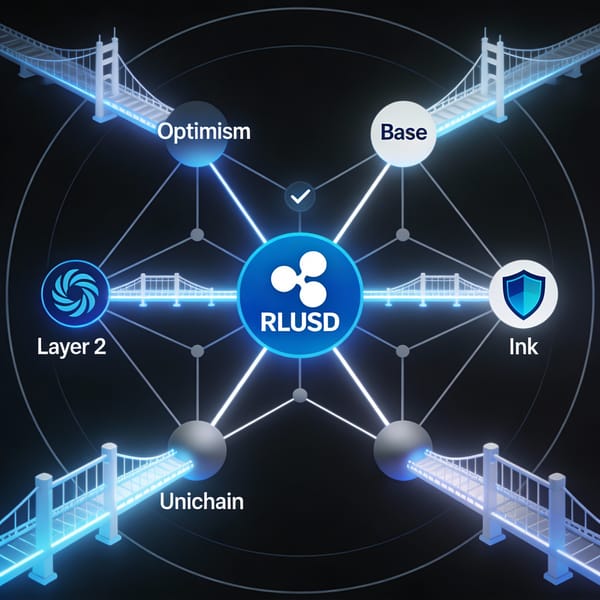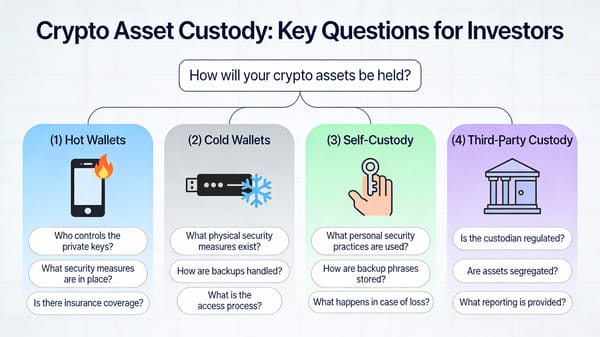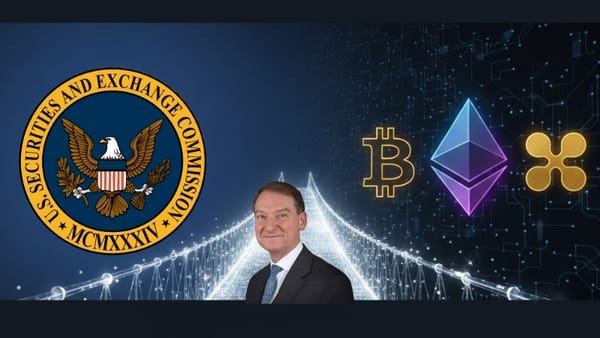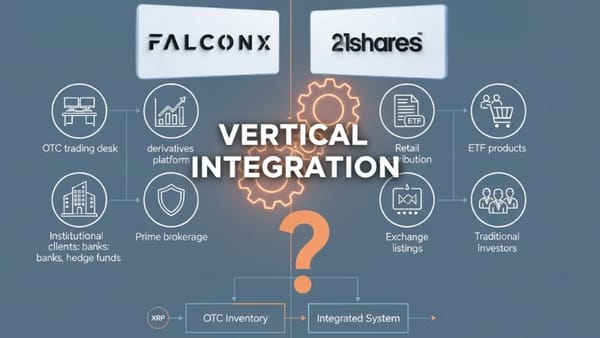Battle of the Blockchain Titans: Why XRP Is Positioned to Dominate Over Avalanche
XRP vs Avalanche: Why regulatory clarity and 300+ banking partnerships position XRP to dominate institutional payments despite AVAX's DeFi capabilities. Deep dive into utilities, purposes and competitive advantages.
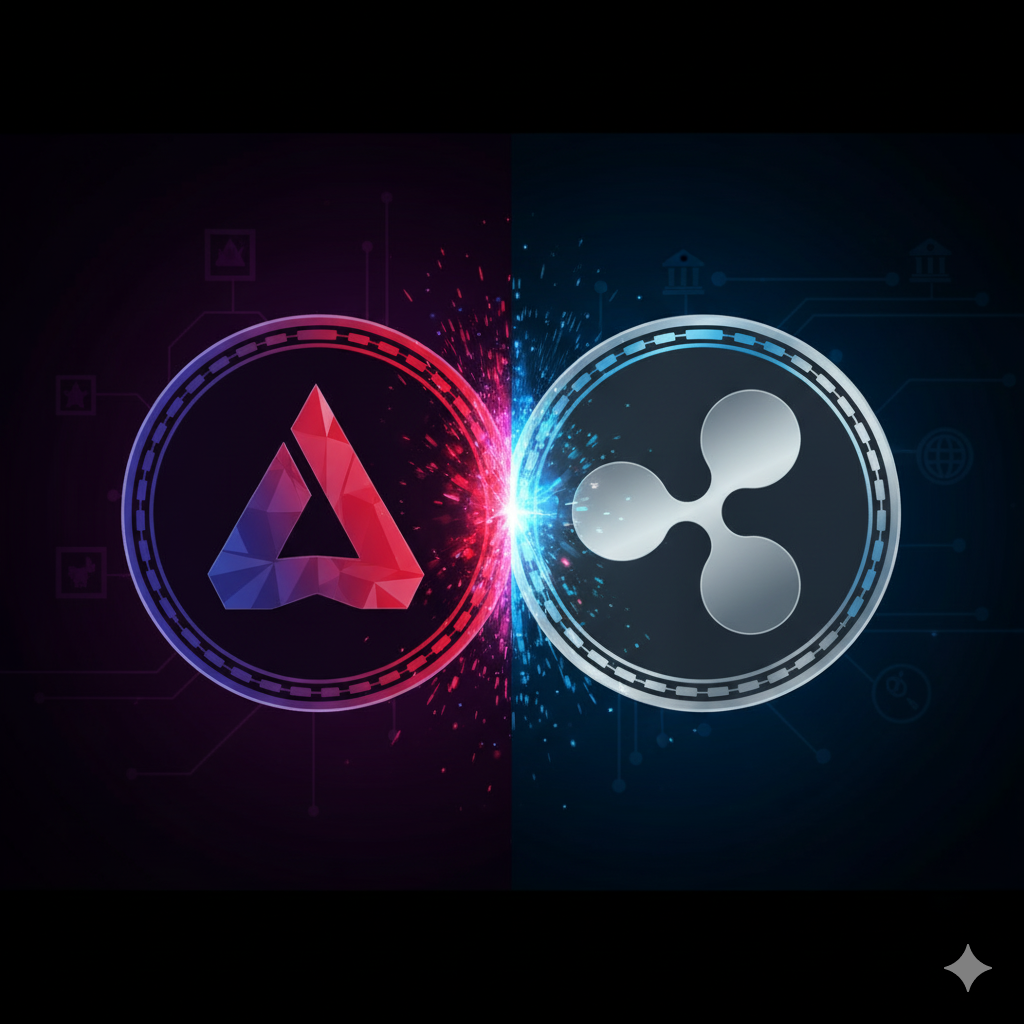
The blockchain landscape is witnessing an intensifying competition between two powerful networks: Avalanche (AVAX) and XRP. While both platforms offer unique capabilities, a deep analysis of their utilities, partnerships, regulatory positioning, and market trajectories reveals why XRP appears poised to significantly outcompete Avalanche in the institutional finance arena. This comprehensive comparison examines both ecosystems to understand their purposes, strengths, and why XRP's strategic advantages may prove insurmountable.
Understanding Avalanche: The Developer-Focused Scalability Platform
Avalanche emerged in September 2020 as a high-performance blockchain platform designed to solve Ethereum's scalability challenges. Developed by Ava Labs under the leadership of Emin Gün Sirer and his team from Cornell University, Avalanche positions itself as a smart contract platform with exceptional technical capabilities.
Avalanche's Core Purpose and Architecture
Avalanche's architecture features three interoperable blockchains working in concert. The X-Chain handles asset creation and exchange, the C-Chain manages smart contracts with full Ethereum Virtual Machine compatibility, and the P-Chain coordinates validators and subnets. This tri-chain structure enables the network to process transactions with remarkable efficiency while maintaining decentralization.
According to Cointelegraph, the platform utilizes a proprietary Avalanche Consensus mechanism that enables near-instant finality for transactions. The network can theoretically handle up to 5,000 transactions per second with sub-second finality, significantly outpacing Ethereum's 30-45 TPS.
Avalanche's Partnership Portfolio
Avalanche has secured notable institutional partnerships that demonstrate its appeal in specific sectors. In October 2025, CoinDesk reported that Avalanche Treasury Co. announced a $675 million SPAC deal with Mountain Lake Acquisition Corp, targeting a $1 billion AVAX treasury and Nasdaq listing in early 2026.
Key partnerships include:
Financial Infrastructure: Crypto Finance, part of Deutsche Börse Group, integrated AVAX in July 2025, enabling regulated access for European financial institutions. SkyBridge Capital tokenized $300 million in hedge fund assets on Avalanche using the ERC-3643 standard, positioning the platform as a leader in real-world asset tokenization.
Gaming and Entertainment: Avalanche Foundation partnered with Helika to launch a gaming accelerator in August 2025, supporting both Web3-native and traditional game studios. The platform hosts games like Off The Grid and MapleStory Universe, leveraging its customizable Layer 1 blockchains for optimized gaming experiences.
Enterprise and Government: Project Trinity involves major Japanese financial institutions using Avalanche for stablecoin-powered delivery versus payment settlement. Wyoming launched a state-backed "Frontier" stablecoin on Avalanche's infrastructure.
Avalanche's Utility: The DeFi and Gaming Specialist
Avalanche's primary utility centers on providing infrastructure for decentralized applications, particularly in DeFi and gaming. The platform's low fees and high throughput make it attractive for developers building complex applications requiring rapid transaction processing.
As of August 2025, Avalanche reported approximately $1.5 billion in total value locked across its DeFi ecosystem, with daily transaction volumes reaching 1.4 million following the Octane upgrade that reduced fees by 42.7%. The upgrade implemented dynamic fee algorithms, slashing base fees from 25 nAVAX to 0.1 nAVAX.
The network supports developers through its Avalanche Academy courses and provides extensive tooling for custom blockchain creation via its subnet architecture. This flexibility allows projects to create sovereign blockchains with high throughput on both public and private networks.
Understanding XRP: The Institutional Payments Powerhouse
XRP, launched in 2012, serves a fundamentally different purpose than Avalanche. Rather than being a general-purpose smart contract platform, XRP was specifically engineered as a bridge asset for cross-border payments and institutional value transfer. Developed by Ripple Labs, XRP operates on the XRP Ledger, utilizing the unique Ripple Protocol Consensus Algorithm.
XRP's Core Purpose: Revolutionizing Global Payments
XRP's mission is singular and focused: to transform how money moves across borders. Traditional cross-border payments using the SWIFT network can take 3-5 days and cost significant fees, with funds often passing through multiple correspondent banks. XRP eliminates this friction by serving as a bridge currency that settles transactions in 3-5 seconds at a fraction of the cost.
According to analysis by AInvest, XRP can process 1,500 transactions per second at an average cost of just $0.0004 per transaction, compared to Bitcoin's $1.88 and Ethereum's $0.46. This efficiency makes XRP the preferred choice for high-volume payment corridors.
XRP's Unmatched Partnership Network
While Avalanche has secured valuable partnerships, XRP's institutional adoption dwarfs its competitor's reach. Ripple has established relationships with over 300 financial institutions across 45+ countries, with more than 40% utilizing XRP through Ripple's On-Demand Liquidity service.
Major Banking Partnerships: Santander Bank, one of Spain's largest financial institutions, integrated XRP into its cross-border payment infrastructure to provide faster and more affordable international transfers. Bank of America, Standard Chartered, and SBI Holdings have confirmed ongoing collaborations with Ripple, using ODL to address high remittance costs.
PNC Bank leverages RippleNet for faster settlements and lower fees for international transactions, while American Express has deepened its partnership with Ripple to enhance cross-border payment efficiency.
Custody and Infrastructure: In July 2025, Ripple appointed Bank of New York Mellon, one of the world's largest custodians, to hold reserves for Ripple USD (RLUSD), its new stablecoin. This partnership solidifies institutional credibility and supports RLUSD as a bridge asset on the XRP Ledger.
Strategic Acquisitions: In April 2025, Ripple acquired prime brokerage firm Hidden Road for $1.25 billion, aiming to control key transaction rails and integrate RLUSD as collateral for institutional services.
Government and Enterprise: Ripple partnered with Dubai Land Department and Ctrl Alt in July 2025 to support real estate tokenization on the XRP Ledger. BDACS, South Korea's digital asset custodian, launched XRP custody services in August 2025, providing institutional clients with regulated access aligned with South Korea's Financial Services Commission roadmap.
XRP's Utility: Institutional Financial Infrastructure
XRP's utility extends far beyond speculative trading. The token serves as the critical bridge asset in Ripple's On-Demand Liquidity solution, which has seen explosive adoption. According to market analysis, ODL processed an astounding $1.3 trillion in quarterly volume by Q2 2025, up from $15 billion in 2024.
The ODL mechanism works elegantly: a financial institution converts local fiat currency to XRP, transfers XRP across borders instantly on the XRP Ledger, and converts it to the destination currency—all within seconds. This eliminates the need for pre-funded nostro/vostro accounts, freeing up capital that would otherwise sit idle in foreign banks.
ISO 20022 Compliance: XRP's integration with ISO 20022, the universal standard for financial messaging, positions it perfectly for mainstream adoption. By 2025, ISO 20022 covers approximately 80% of global transactions, and XRP's native compatibility allows it to interface seamlessly with existing banking infrastructure.
Real-World Asset Tokenization: The XRP Ledger has facilitated a $131.6 million real-world asset market through partnerships like Linklogis (tokenizing $2.9 billion in cross-border trade) and Dubai Land (tokenizing $305.8 million in real estate). Ripple's RLUSD stablecoin, which is NYDFS-compliant, integrates into platforms like Aave's Horizon RWA market.
Payment Integration: PayPal integrated XRP into its "Pay with Crypto" service in July 2025, offering 0.99% fees and shielding users from volatility, significantly expanding XRP's retail and business reach.
The Critical Differentiator: Regulatory Clarity
The most significant factor separating XRP from Avalanche is regulatory positioning. This difference cannot be overstated—it fundamentally determines which institutions can adopt which blockchain.
XRP's Regulatory Triumph
In August 2025, Ripple's settlement with the SEC concluded a nearly five-year legal battle. The court confirmed that XRP is not a security when traded on public exchanges, though institutional sales remain regulated. Ripple paid a $125 million fine and received an injunction restricting certain institutional sales, but the ruling provided unprecedented clarity.
This distinction is monumental. By reclassifying XRP as a digital commodity under CFTC framework rather than a security under SEC jurisdiction, the settlement opened the floodgates for institutional participation. Wall Street firms that had avoided XRP due to regulatory ambiguity can now confidently allocate capital.
Global regulators have aligned with this perspective. Japan's Financial Services Agency explicitly classified XRP as a utility token, while Singapore and Switzerland embraced it as a bridge asset for cross-border payments and DeFi integration.
National Bank Charter Application: Ripple applied to the Office of the Comptroller of the Currency for national trust bank charters in July 2025. If approved, Ripple would operate federally chartered banks with legitimacy across state lines and direct access to the Federal Reserve's payment infrastructure—an unprecedented development for a crypto company.
Avalanche's Regulatory Position
In contrast, Avalanche lacks the same level of regulatory clarity. While the platform hasn't faced legal challenges comparable to Ripple's, it also hasn't secured the explicit regulatory validation that XRP now enjoys. For institutional investors, particularly traditional banks and asset managers, regulatory certainty is paramount.
Concerns about validator decentralization have been raised by analysts. A 2023 Messari study found that approximately 67% of staked AVAX was hosted on Amazon Web Services, suggesting centralization risks. The analysis indicated an operational Nakamoto coefficient of about 1.3, raising questions about network resilience.
Furthermore, while Avalanche has gained traction in DeFi and gaming, these sectors don't carry the same regulatory weight or institutional capital as the global payments infrastructure that XRP targets.
Market Metrics and Institutional Momentum
The numbers tell a compelling story about XRP's institutional advantage.
Market Capitalization and Liquidity
As of October 2025, XRP commands a market capitalization of approximately $178.92 billion compared to Avalanche's $10.19 billion—a more than 17x difference. XRP's 24-hour trading volume of $2.82 billion dwarfs Avalanche's $289.12 million, providing significantly tighter spreads and smoother trade execution.
This liquidity advantage is critical. Institutional investors require deep markets to enter and exit positions without significant price impact. XRP's dominance share of 4.60% of the total crypto market confirms broader influence even during volatile periods.
ETF Momentum: The Institutional Gateway
The approval of cryptocurrency ETFs represents validation from traditional financial gatekeepers. The ProShares Ultra XRP ETF, approved in July 2025, attracted $1.2 billion in assets under management in its first month alone. This milestone demonstrated that institutional appetite for XRP exposure is substantial.
Currently, 11 additional spot XRP ETF applications are under SEC review from major asset managers including Bitwise, Grayscale, Franklin Templeton, 21Shares, and Canary Capital. Analysts assign an 85-95% probability of approval by year-end 2025. If approved, these ETFs could inject $5-11 billion in institutional capital, mirroring Bitcoin's ETF-driven rally in 2024.
Avalanche, meanwhile, has seen ETF interest but lacks the same institutional momentum. Grayscale filed an S-1 to convert its Avalanche Trust into a spot AVAX ETF, which could mark the first yield-bearing altcoin ETF thanks to staking features. However, this development hasn't generated the same capital inflows or institutional validation that XRP has achieved.
Institutional Adoption Metrics
Institutional holdings of XRP reached $7.1 billion in Q2 2025, with 47 Fortune 500 companies now using RippleNet. The platform maintains 92% client retention, demonstrating that enterprises find real value in XRP's infrastructure.
Whale accumulation activity has intensified, with large holders increasing their XRP positions by significant margins. Data shows that 93.5% of XRP's circulating supply is held at a profit, indicating sustained confidence among long-term holders.
BitGo, a major digital asset custodian, reported that XRP comprised 3.9% of its holdings as of June 2025, highlighting growing institutional custody demand. CME Group introduced XRP futures in May 2025, seeing $542 million in trading volume during the first month, with 45% originating from outside North America. Open interest climbed from $70.5 million to over $1 billion by August.
Transaction Economics: Real-World Cost Comparison
When evaluating blockchain utility for institutional adoption, transaction costs and speed are paramount. Financial institutions process millions of transactions daily, making even small cost differences significant at scale.
Cost Efficiency Analysis
XRP's transaction cost averages $0.0004, making it one of the most economical blockchains for high-volume operations. For a bank processing 100,000 daily transactions, this translates to just $40 in blockchain fees per day.
Avalanche's Octane upgrade reduced fees dramatically, but the network still operates at a higher baseline than XRP for payment-focused applications. While AVAX excels at complex smart contract execution, this capability comes with inherent overhead that XRP's purpose-built design avoids.
Settlement Speed Comparison
Both platforms offer impressive speed. Avalanche achieves sub-second finality with its consensus mechanism, while XRP settles transactions in 3-5 seconds. However, XRP's settlement speed is purpose-optimized for payments, with the entire infrastructure designed around this use case.
The XRP Ledger maintains a 99.999% uptime record, critical for financial institutions that require always-on infrastructure. This reliability, combined with 3-5 second settlement, makes XRP a compelling alternative to SWIFT's multi-day delays.
Network Effects and Ecosystem Moats
XRP's Self-Reinforcing Adoption Cycle
XRP benefits from powerful network effects that create a self-reinforcing adoption cycle. Each financial institution that joins RippleNet makes the network more valuable for all participants. As more corridors open—such as the growing adoption in India, Brazil, Mexico, and the Philippines—liquidity deepens and costs decrease further.
Over 2.2 billion XRP tokens are held in institutional wallets as of 2025, with open interest in XRP futures markets surging 400% year-to-date. This institutional accumulation creates price stability and confidence for new adopters.
The launch of Ripple's EVM Sidechain in Q2 2025 enables smart contract functionality while maintaining compatibility with the XRP Ledger. Multi-purpose tokens (MPTs) support structured products and real-world assets, while institutional lending features including undercollateralized options debuted in Q3 2025.
Avalanche's Developer-Centric Moat
Avalanche's strength lies in its developer ecosystem and technical flexibility. The platform's subnet architecture allows projects to create custom blockchains tailored to specific needs—a powerful capability for gaming and DeFi applications requiring specialized infrastructure.
However, this developer focus creates a different type of moat than XRP's institutional network effects. While Avalanche may excel at attracting innovative projects, XRP has locked in the far larger prize: the global payments infrastructure used by trillions of dollars in annual transactions.
Use Case Alignment: Specialized vs. Generalized
XRP's Laser Focus on Payments
XRP's singular focus on cross-border payments represents both a limitation and a superpower. By optimizing every aspect of the protocol for this one use case, Ripple has created a solution that institutions can confidently adopt without concern about competing priorities diluting performance.
RippleNet's APIs provide strategic capabilities, efficient processing, and faster scaling specifically for payment operations. The Ripple Payments UI enables payment creation, monitoring, troubleshooting, and analysis—all designed around financial institution workflows.
The elimination of pre-funded nostro accounts alone creates massive value. Banks traditionally lock hundreds of millions or billions of dollars in foreign accounts to facilitate cross-border payments. ODL frees this capital, allowing banks to redeploy resources more strategically while still maintaining instant settlement capability.
Avalanche's Multi-Sector Approach
Avalanche pursues a broader strategy, targeting DeFi, gaming, enterprise applications, and tokenization simultaneously. This diversification reduces risk but also spreads resources and mindshare across multiple sectors.
The platform's technical capabilities are impressive—subnets provide customization that few blockchains match. However, in the institutional finance sector, this flexibility matters less than regulatory clarity, existing relationships, and proven track record handling trillions in transaction volume.
Future Trajectory: CBDC Integration and Tokenized Finance
XRP's Position in CBDC Ecosystem
Central Bank Digital Currencies represent the future of national monetary systems, and XRP is positioning itself as the bridge between these digital currencies. Ripple is actively working with several central banks on CBDC pilots, leveraging XRP's role as a neutral bridge asset between fiat and digital currencies.
This positioning is strategic genius. Rather than competing with CBDCs, XRP enables interoperability between them. When different countries launch CBDCs, they'll need a mechanism for cross-border settlement—XRP is purpose-built for exactly this function.
The Bank for International Settlements' vision of programmable, shared platforms for central bank money and tokenized assets aligns closely with XRP's capabilities. As tokenized assets expand, XRP's role as a settlement bridge becomes increasingly critical.
Avalanche's Tokenization Play
Avalanche has made significant strides in real-world asset tokenization, particularly through its relationship with institutional players like SkyBridge Capital. The platform's technical capabilities support complex tokenization use cases requiring programmability and customization.
However, tokenization represents a smaller market opportunity than global payments infrastructure—at least in the near term. While both sectors will grow, the $150 trillion annual SWIFT transaction volume dwarfs current tokenization market sizes.
Why XRP Will Outcompete Avalanche
The evidence overwhelmingly supports XRP's competitive advantage over Avalanche in the institutional finance arena:
Regulatory Validation: XRP has achieved what few cryptocurrencies can claim—explicit regulatory clarity from U.S. authorities and global recognition as a utility asset. This removes the single largest barrier to institutional adoption. Avalanche, while not facing legal challenges, lacks this same level of validation.
Institutional Partnerships: With over 300 financial institutions versus Avalanche's more limited partnership network, XRP has built an ecosystem moat that compounds over time. Each new bank adoption makes XRP more valuable for all participants.
Purpose-Built Design: XRP's laser focus on payments creates unmatched efficiency for its specific use case. While Avalanche offers greater flexibility through smart contracts and subnets, institutions prioritizing payments don't need this complexity—they need reliability, speed, and cost efficiency.
Market Liquidity: XRP's 17x larger market cap and significantly higher trading volumes provide the liquidity institutional investors require. This liquidity gap is difficult to overcome and represents years of accumulated trust and adoption.
Capital Momentum: The $7.1 billion in institutional XRP holdings, combined with pending ETF approvals potentially bringing $5-11 billion in additional capital, creates momentum that Avalanche cannot currently match.
Transaction Economics: At $0.0004 per transaction, XRP offers cost efficiency that makes economic sense even at massive scale. For institutions processing millions of transactions, this cost advantage compounds significantly.
Strategic Positioning for CBDCs: As nations develop CBDCs, XRP's role as a neutral bridge asset positions it at the center of next-generation monetary infrastructure. Avalanche lacks this strategic positioning in the most transformative development in global finance.
Conclusion: Different Tools for Different Jobs
Both Avalanche and XRP are impressive blockchain platforms that excel in their respective domains. Avalanche's technical capabilities, developer flexibility, and subnet architecture make it compelling for DeFi applications, gaming, and custom blockchain deployments. The platform will likely continue growing in these specialized sectors.
However, when comparing their competitive positions in institutional finance—the largest and most lucrative blockchain use case—XRP demonstrates overwhelming advantages. Its regulatory clarity, institutional partnerships, purpose-built design, and market momentum create a competitive moat that Avalanche will struggle to overcome.
As one analysis noted, XRP offers stronger regulatory clarity and payments utility with lower downside risk, while AVAX provides more room for extreme gains due to its smaller market cap and expanding DeFi ecosystem. This captures the essential trade-off: Avalanche may offer higher speculative upside, but XRP offers institutional-grade utility with regulatory validation—the ingredients for sustainable, long-term dominance in global payments.
The blockchain industry has room for multiple winners serving different needs. But in the specific battle for institutional payment infrastructure—the segment handling trillions in annual volume—XRP has built advantages that position it to massively outcompete Avalanche. For investors and institutions evaluating these platforms, the choice depends on whether you're seeking speculative exposure to emerging DeFi and gaming ecosystems, or positioning for the regulated, institutional adoption of blockchain technology in global finance.
Based on current trajectories, partnerships, regulatory positioning, and institutional momentum, XRP appears poised to become the dominant blockchain for institutional payments, while Avalanche carves its niche in developer-focused applications. Both can succeed, but XRP is playing a bigger game with clearer rules—and winning.
Sources
- Avalanche Official Website
- Messari - Avalanche Price, AVAX to USD, Research & News
- Wikipedia - Avalanche Blockchain Platform
- AInvest - Avalanche: Institutional Adoption and Technical Breakout Potential
- CoinDesk - Avalanche Treasury Co. SPAC Deal
- Crypto Finance - Avalanche Regulated Access Expansion
- Avalanche Foundation - Gaming Accelerator Launch
- Cointelegraph - Avalanche Ecosystem Overview
- Coinpedia - Full List of Ripple's Partnerships After XRP Regulatory Victory
- CoinDCX - Ripple Eyes U.S. Banking License
- AInvest - XRP's 2025 Breakout: Regulatory Clarity and Institutional Adoption
- 21Shares - Ripple's Big Plans for 2025
- European Business Magazine - XRP Price Surge and Strategic Partnerships
- CoinDesk - Ripple and BDACS Partnership
- NOWPayments - Top Banks Adopting XRP 2025
- AldoMedia - Comprehensive List of Companies Using XRP
- CCN - Who Owns the Most XRP in 2025
- CCN - XRP Didn't Replace SWIFT—But Here's What It Did Instead
- AInvest - Ripple's XRP: A Game-Changer in Cross-Border Payments
- Financial Content - Ripple's XRP Poised to Revolutionize Global Payments
- Arowana - 10 Reasons XRP Is the Future of Cross-Border Payments
- OKX - Ripple Payments Revolution
- 101 Blockchains - How Solana and XRP are Shaping Cross-Border Payments
- AInvest - XRP's Strategic Ascendancy
- AInvest - XRP's Ambitious Leap to $1 Trillion
- Itexus - ISO 20022 and XRP: Revolutionizing Cross-Border Payments
- AInvest - XRP's Strategic Position in the 2025 Scaling Wars
- Invezz - XRP, Avalanche and Polygon: Layer 1 vs Sidechain
- BitDegree - XRP vs Avalanche Comparison & Charts
- InvestingHaven - XRP vs. Avalanche: Which Is More Likely to Be a Millionaire Maker?
- Cointelegraph - How XRP's Regulatory Clarity Opened the Doors to Institutional Adoption
- AInvest - XRP's Long-Term Value Catalysts
- AInvest - XRP's Regulatory Clarity and Institutional Adoption
- AInvest - XRP's 2025 Breakout and Road to Mainstream Finance
DISCLAIMER: This newsletter is for informational purposes only and does not constitute investment advice, advertising, or a recommendation to buy, sell, or hold any securities. This content is not sponsored by or affiliated with any of the mentioned entities. Investments in cryptocurrencies or other financial assets carry significant risks, including the potential for total loss, extreme volatility, and regulatory uncertainty. Past performance is not indicative of future results. Always consult a qualified financial professional and conduct thorough research before making any investment decisions.
